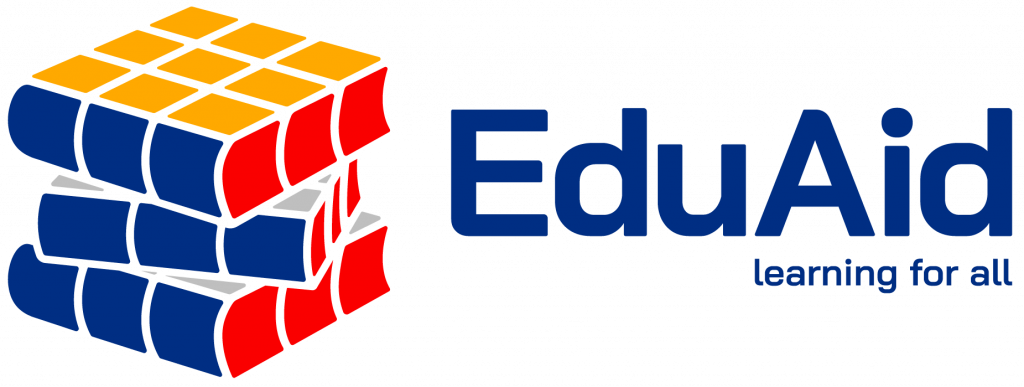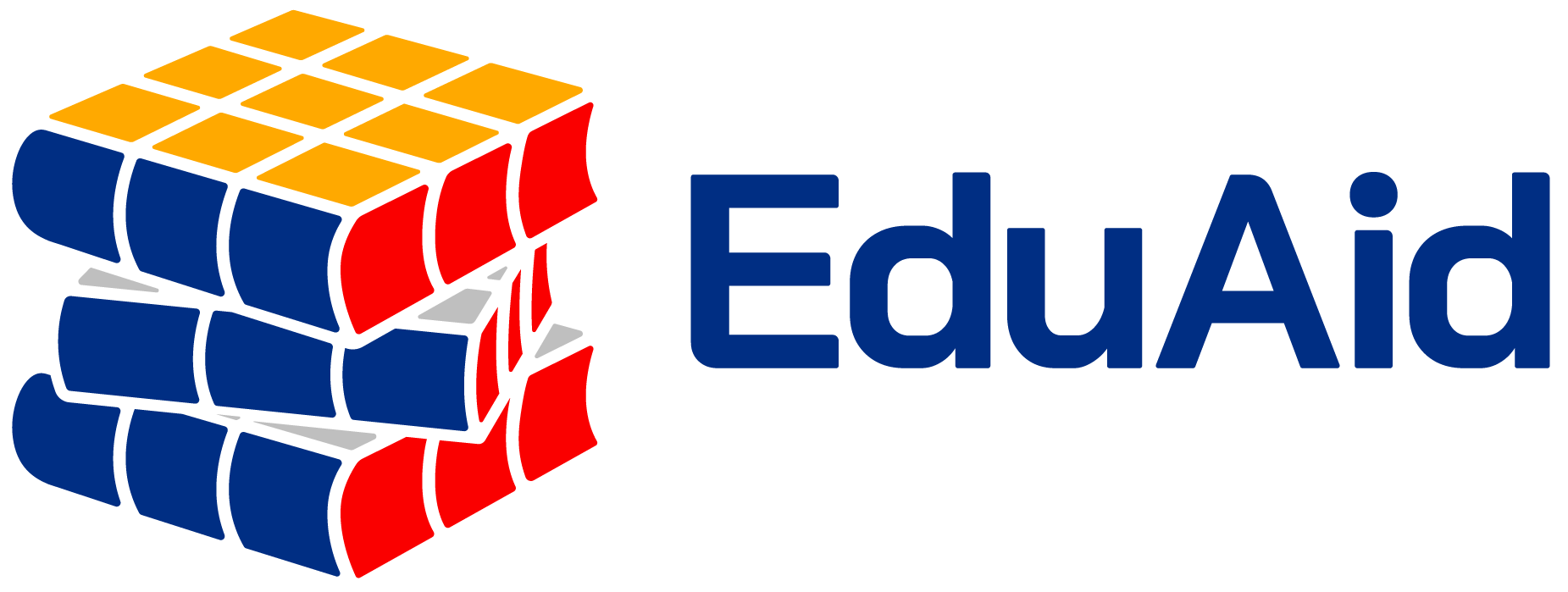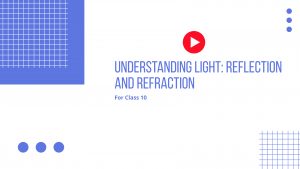NCERT Solutions for Maths Class 9 Chapter 5
Introduction To Euclid’s Geometry
Exercise 5.1
Question 1: Which o the following statements are true and which are false? give reasons for your answers.
(i) Only one line can pass through a single point.
Answer: False
Because an endless number of lines can pass through a single point ‘ P ‘ below.
There exists an infinite number of lines travelling through a single point P , as shown in the diagram below.

(ii) There are an infinite number of lines which pass through two distinct points
Answer: False
Only one line can pass through two points. There is only one single line that can travel between two separate points P and Q , as shown in the following diagram.
![]()
(iii) A terminated line can be produced indefinitely on both the sides
Answer: True
- On both the sides, a terminated line can be produced indefinitely.
- Assume that AB is a terminated line. It can be seen that it can be produced.
![]()
![]()
(iv) If two circles are equal, then their radii are equal.
Answer: True
If two circles are equal, then the centers and circumferences of the two circles are the same, the radii will be equal.
(v) In the following figure, if \(AM=PQ\) and \(PQ=XY\), then \(AB=XY\)
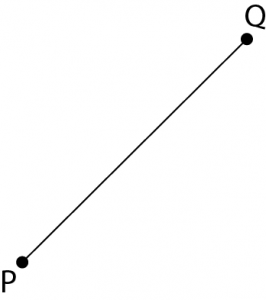
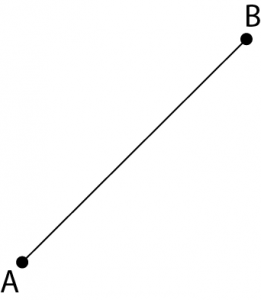
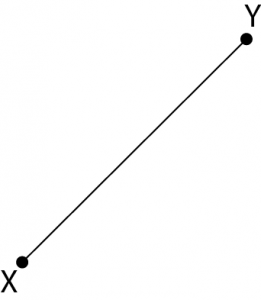
Answer: True
- It is assumed that \(AB\) and \(XY\) are two terminated lines (Line segments) and that they are both equal to \(PQ\), a third line.
- Euclid’s first axiom stats that things which are equal to the same thing are equal to one another.
- Therefore, the lines \(AB=PQ\) and \(PQ=XY\), hence \(AB=XY\) will be equal to each other.
Question 2: Give a definition for each of the following terms. Are there other terms that need to be defined first?what are they, and how might you define them?
(i) Parallel lines
(ii) Perpendicular lines
(iii)Line segment
(iv)Radius of a circle
(v) Square
Answer: The following terms are required for the desired definition:
- Point:
- A point can be approximated by a little dot formed with a sharp pencil on a sheet of paper.
- A point does not have any dimensions; it simply has a position.
- Line:
- A straight line made by folding a piece of paper, a straight string pulled at both ends, and the edge of a ruler are all examples of geometrical lines.
- The basic concept about a line is that it should be straight and that it should extend in definitely in both the direction
- Ray:
- A ray AB is a segment of line l that has only one end point A and contains the point B.
- A point can be approximated by a little dot formed with a sharp pencil on a sheet of paper.
- A point does not have any dimensions; it simply has a position.
- A straight line made by folding a piece of paper, a straight string pulled at both ends, and the edge of a ruler are all examples of geometrical lines.
- The fundamental principle of a line is that it should be straight and continue indefinitely in both directions.
- Close examples of planes include the smooth surface of a wall or the smooth surface of a piece of paper.
- A ray is a segment of line l that has only one end point and contains the point.
- The union of two non-collinear rays with a common beginning point is called an angle.
- Circle:
- In a plane, a circle is the collection of all points whose distance from a fixed point is constant.
- The fixed point is called the centre of the circle
- Quadrilateral:
- A closed figure made of four lines segment is called quadrilateral.
(i) Parallel lines
Answer:
- Parallel lines are those in which the perpendicular distance between two lines is always the same.
- To put it another way, parallel lines are lines that never cross one other.
- To define parallel lines, we need to know about the point, the lines and the distance between the lines and the intersection point.
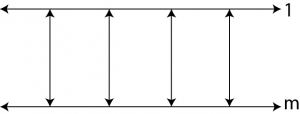
(ii) Perpendicular lines
Answer:
- If two lines intersect each other at \(90^0\) then these are called perpendicular lines.
- Before defining perpendicular lines, we must first define the line and the angle.
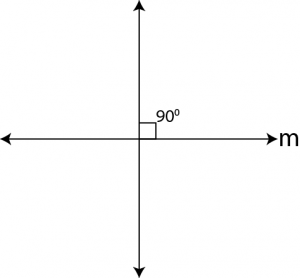
(iii) Line segment
Answer:
- A line segment is a straight line drawn from one point to another point.
- To define a line segment, we must first understand what a point and a line segment are.
(iv) Radius of a circle
Answer:
- It is distance between the center of a circle to any point lying on the circle.
- We must understand point and circle in order to define the radius of a circle.
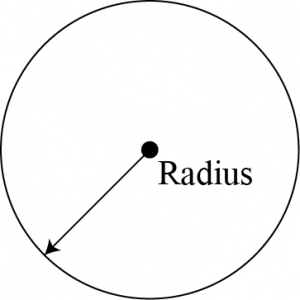
(v) Square
Answer:
- A square is a quadrilateral with all sides equal in length and all angles
measuring \(90^0\). - To define square, we must know about quadrilateral, side, and angle.
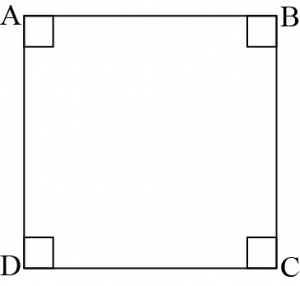
Question 3 Consider the two ‘postulates’ given below:
(i) Given any two distinct points \(A\) and \(B\), there exists a third point \(C\), which is between \(A\) and \(B\).
(ii) There exists at least three points that are not on the same line.
Do these postulates contain any undefined terms? Are these postulates consists?
Do they follow from Euclid’s postulates?Explain.
Amswer
- In the given postulates, there are several undefined terms.
- Because the above postulates pertain to two different situations, they are consistent.
- Furthermore, any assertion that contradicts a well-known axiom or postulate is impossible to infer.
- The postulates of Euclid do not lead to these conclusions.
- They follow from the axiom, “Given two distinct points, there is a unique line that passes through them”
Question 4: If a point \(C\) lies btween two point \(A\) and \(B\) such that \(AC=BC\) then prove that \(AC=\frac{1}{2}AB\) Exxplain by draing the figure.
Answer:: From the Figure,
![]()
Given hat \(AC=BC\)
And point \(C\) lis between two points \(A\) and \(B\)
Consider \(C\)
Adding \(AC+AC=BC+AC\)
\(⇒2AC=BC+AC\)
Here we have \(BC+AC=AB\)
Here we have \(BC+AC=AB\)
\(⇒2AC=AB\)
\(⇒AC=\frac{1}{2}AB\)
Question 5: In above question, point C is called a midpoint of line segment AB , prove that every line segment has one and only mid point
Answer: From the Figure,
![]()
Easier solution
Now to we will prove line AB has only one midpoint such that
Consider we have two midpoint \(C\) and \(D\) of line segment \(AB\)
Thus
AD=DB …… (1)
AC = CB …… (2)
Now subtracting equation (1)-(2) we get
\(AD – AC = DB – CB\)
Using figure we have
\(⇒CD=-DC\)
\(⇒2CD=0\)
\(⇒CD=0\)
Therefore \(C\) and \(D\) coincides
Hence required is proved.
Lengthy solution
\(AC=CB\) …(1)
Now adding \(AC\) on both sides of equation (1) we get
\(AC+AC=AC+CB\) …(2)
From the figure we have
\(AC+CB=AB\)
Now figure from equation (2) we have
\(2AC=AB\) …(3)
Similarly we have
\(2AD=AB\) …(4)
Now equalizing equation (3) and (4) w get
\(2AC=AD\)
\(⇒AC=AD\)
Therefore \(C\) and \(D\) coincides
Hence required is proved.
Question 6: In the followingfigure, if \(AC=BD\), then prove that \(AB=CD\).
![]()
Answer:
We are asked to prove \(AB=CD\)
Let
\(AB=CD\) …(1)
Now adding \(B\) on both sides of equation (1) we have
\(AB+BC=CD+BC\)
From the figue we have
\(AC=BD\) …(2)
Now from the figure we have
\(AC=AD-CD\) …(3)
\(BD=AD-AB\) …(4)
Using above equation (2), (3) and (4) we have
\(AD-CD=AD-AB\)
\(⇒-CD=-AB\)
\(⇒AV=CD\)
Hence required is proved
Question 7: Why is Axiom in the list of Euclid’s axioms, considered a ‘universal truth’ ?
(Note that the question is not about the fifth postulate.)
Answer: Axiom 5 states that the whole is greater than the part. This axiom is known as a universal truth because it holds true because it holds true
in any field, and not just in the field of mathematics.
Let us take two cases one in the field of mathematics, and one other than that
- Case one
- Let t represent a whole quantity and only \(a,b,c\) are parts of it.
- \(t = a + b + c\)
- Clearly t will be greater than all its parts \(a,b,c\).
- As a result, it is correct to say that the whole is greater than the part
- Case two
- o Let us consider the continent Asia.
- Now consider the country of India, which is located in Asia.
- Although India is a part of Asia, it is also true that Asia is larger than India.
- As a result, we might conclude that the whole is greater than the part.
- This holds true in any corner of the world, making it a universal truth.
Study materials
- Refernce Books
- NCERT Solutions
- Syllabus
